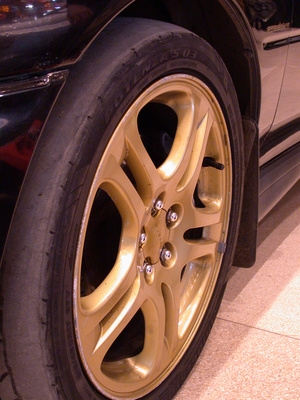
CV joints, constant velocity joints, fit between the wheels and the drive shaft or transaxle of a car. The function of a CV joint is to allow a shaft to rotate over a flexible bend or angle without losing speed. An example would be where the steerable front wheels join to the car's axle in a front-wheel drive car.
CV joints allow power to pass smoothly from the engine to the wheels without friction or play in motion. This is necessary because the front wheels of a car turn at different angles. CV joints cushion against up-and-down movements and allow wheels to be steered in front-wheel drive cars.
U joints, or universal joints, also allow for rotation of a shaft over a bend. CV joints accommodate a wider range of angles without losing speed. For this reason, U joints are used mostly for wheels that are powered but not steerable, such as the back wheels in a rear-wheel drive car. However, CV joints are common in rear-wheel drive cars with independent suspension, where the left and right back wheels have greater independence of movement.
There are two types of CV joint. The CV joint at the inboard end of the drive shaft is called a Triax joint. It adjusts for the up-and-down movement of the suspension. A second type of CV joint appears on the outboard end of the shaft, adjacent to the wheels. This joint is very flexible and allows wide range of movement in the front wheels.
Constant velocity joints are protected by a weather boot that keeps out moisture and dirt. If the boot is in good condition, joints are trouble-free. If the boot is damaged, the constant velocity joints are at risk. Check the boot's condition regularly to prevent possible damage to the joints.